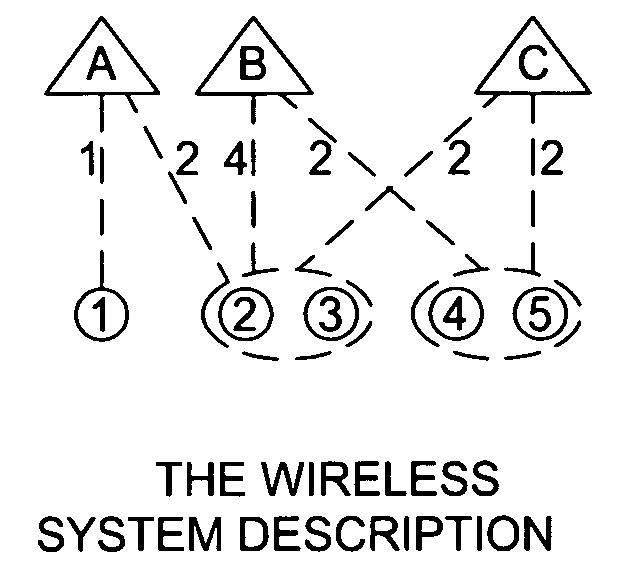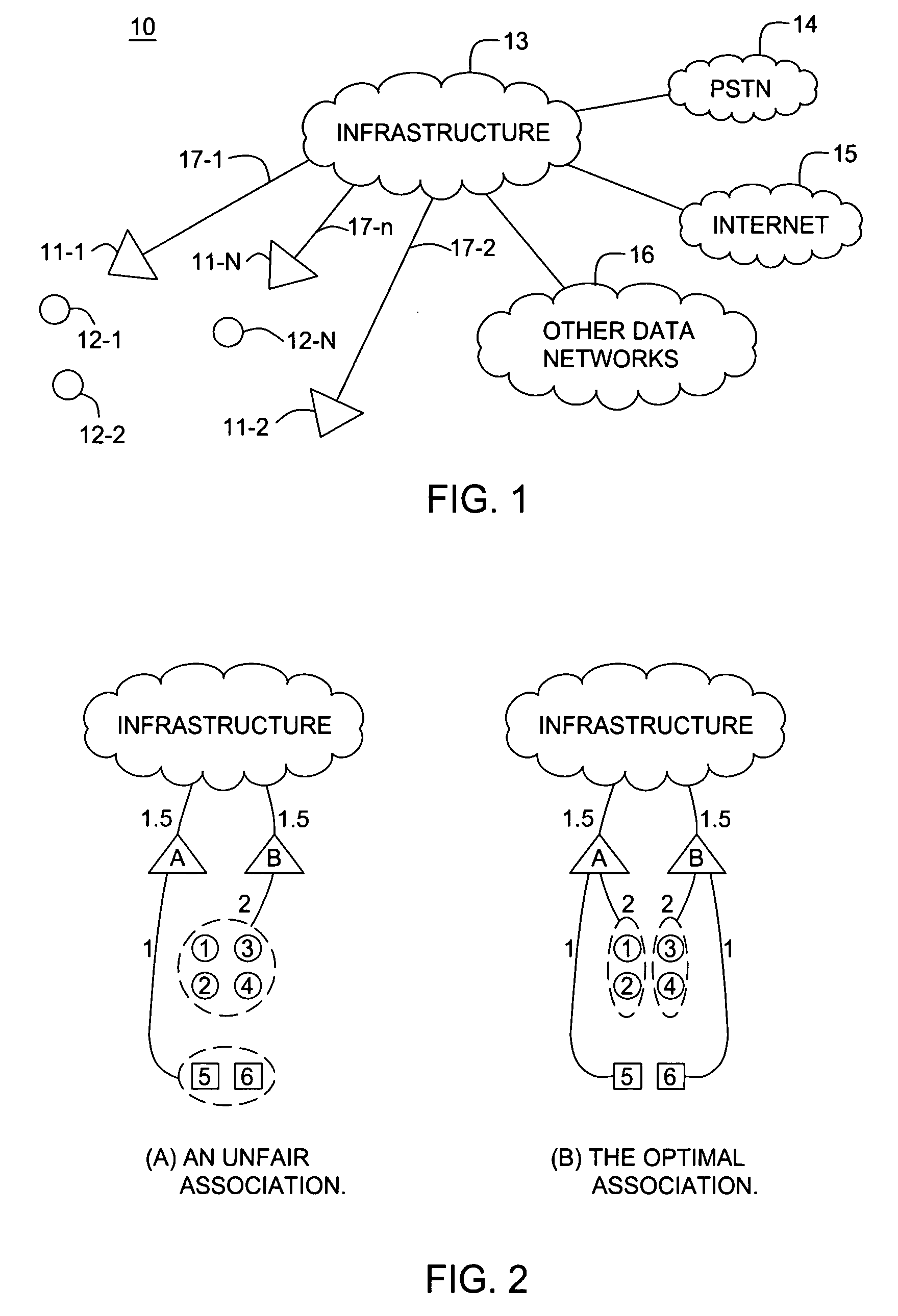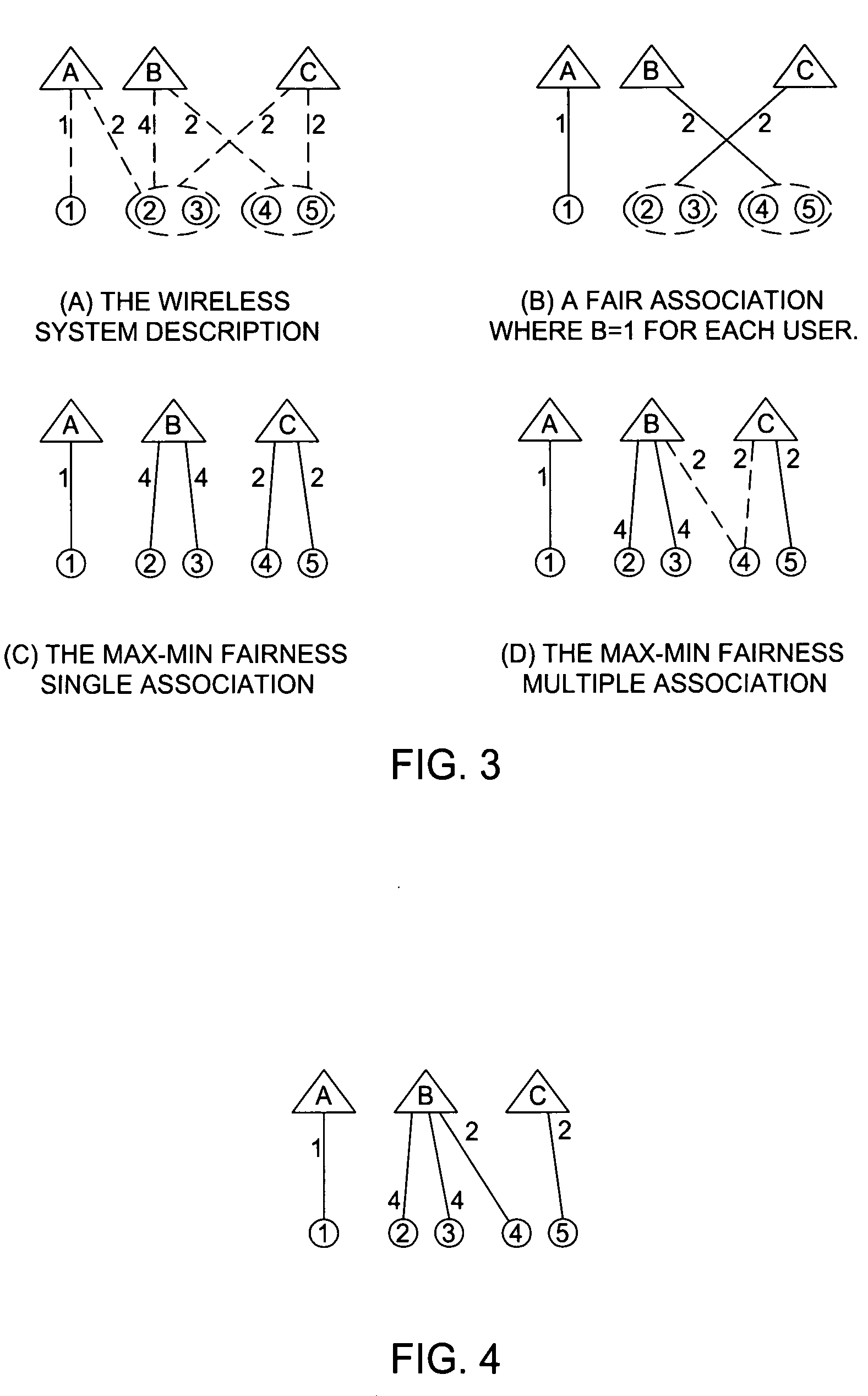Fairness and load balancing in wireless LANs using association control
a wireless lan and load balancing technology, applied in the field of wireless local area network load balancing, can solve the problems of unfair bandwidth allocation among users and user load, and achieve the effect of greatly reducing unfair bandwidth allocation, unbalanced load and unfair bandwidth allocation
- Summary
- Abstract
- Description
- Claims
- Application Information
AI Technical Summary
Benefits of technology
Problems solved by technology
Method used
Image
Examples
case ii
In turn, it results that yaint≦T+2·yafrac. Two cases are considered below: [0086] Case I. Suppose that yafrac≧T. Thus, yaint≦3·yafrac. It results that the normalized bandwidth {overscore (b)}uint allocated to user u associated with access point a in the integral solution is b_uint=1yaint≥13·yafrac=b_ufrac / 3.[0087] Suppose that yafracaint≦3·T. Accordingly, each user u that is associated with access point a in the integral solution experiences a normalized bandwidth b_uint=1yaint≥13·T,
and thereby completing the proof.
[0088] It is now shown that the inventive method finds the optimal integral solution for max-min time fairness. Time fairness attempts to provide a fair service time to the users regardless of the effective bit rates, ra,u and Ra, that they experience. Such fairness is considered, for instance, when the system bottlenecks are the backhaul links and all these links have the same bit rate, R. In such instance, a max-min time fairness solution also guarantees max-min ba...
PUM
 Login to View More
Login to View More Abstract
Description
Claims
Application Information
 Login to View More
Login to View More - R&D
- Intellectual Property
- Life Sciences
- Materials
- Tech Scout
- Unparalleled Data Quality
- Higher Quality Content
- 60% Fewer Hallucinations
Browse by: Latest US Patents, China's latest patents, Technical Efficacy Thesaurus, Application Domain, Technology Topic, Popular Technical Reports.
© 2025 PatSnap. All rights reserved.Legal|Privacy policy|Modern Slavery Act Transparency Statement|Sitemap|About US| Contact US: help@patsnap.com



